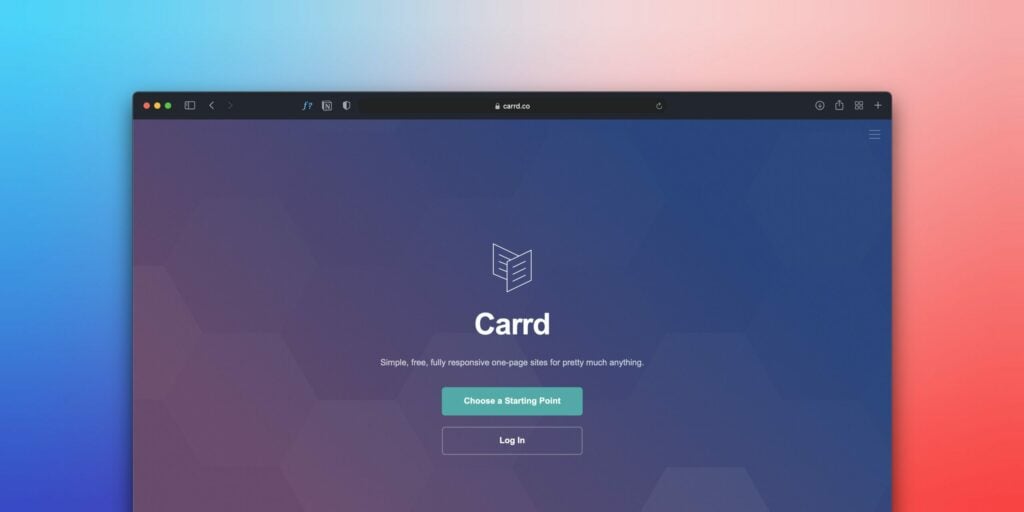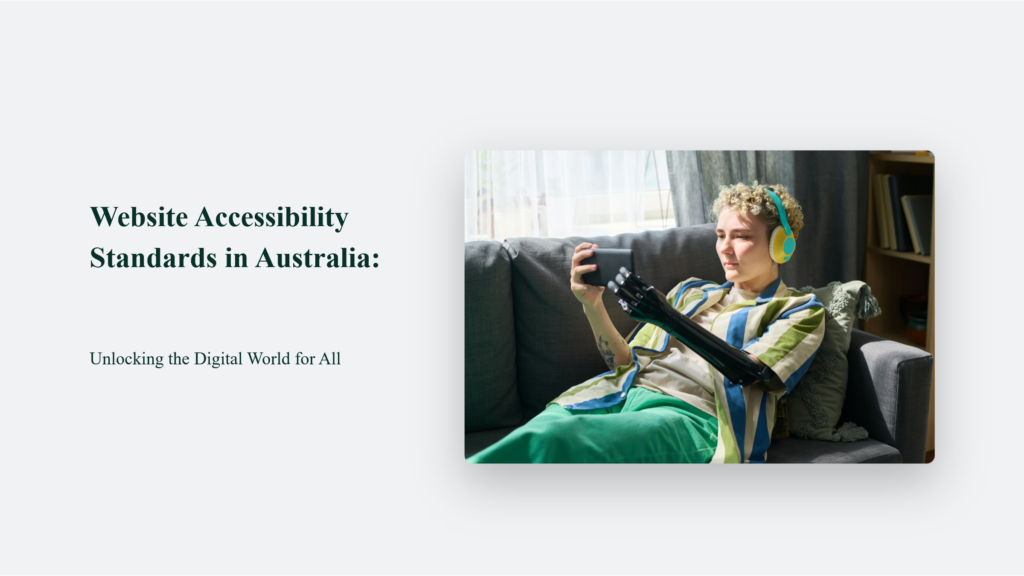

Website Accessibility Standards in Australia: Unlocking the Digital World for All

As Seen On
In today’s digital age, the internet has become an integral part of our lives, connecting us to a vast world of information, services, and opportunities. However, for many individuals with disabilities, navigating the online realm can be a daunting task, often hindered by inaccessible websites and digital barriers. It is where website accessibility standards come into play, ensuring that everyone, regardless of their abilities, can access and engage with online content seamlessly.
Australia, a nation that prides itself on inclusivity and equal opportunities, has significantly promoted website accessibility standards. These guidelines not only level the playing field for individuals with disabilities but also benefit businesses by expanding their reach and fostering a more inclusive digital landscape.

The Importance of Website Accessibility Standards
Imagine being unable to access vital information, services, or resources simply because a website is not designed with your needs in mind. This scenario is all too familiar for individuals with visual, auditory, cognitive, or physical impairments. Website accessibility standards aim to eliminate these barriers, ensuring everyone can navigate and interact with digital content effortlessly.
By adhering to these standards, businesses and organisations can tap into a vast and often overlooked market while demonstrating their commitment to inclusivity and social responsibility. Moreover, accessible websites enhance user experience, prioritising straightforward navigation, intuitive design, and seamless functionality.
Australian Standards and Guidelines
In Australia, the Web Content Accessibility Guidelines (WCAG) 2.1, developed by the World Wide Web Consortium (W3C), serve as the primary reference for website accessibility standards. These guidelines provide a comprehensive framework for creating inclusive and accessible digital content, covering four fundamental principles:
- Perceivable: Ensuring that information and user interface components are presentable to users in ways they perceive.
- Operable: Ensuring that user interface components and navigation are operable.
- Understandable: Ensuring that information and the operation of user interface components are understandable.
- Robust: Ensuring that content is robust enough to be interpreted reliably by various user agents, including assistive technologies.
These principles are further broken down into specific success criteria, each with varying conformance levels (A, AA, and AAA), allowing organisations to tailor their accessibility efforts based on their needs and resources.
WCAG Referencing Around the Globe
United States
In the United States, WCAG is referenced by various laws and regulations related to digital accessibility, including:
- The Americans with Disabilities Act (ADA): While the ADA does not explain organisations’ WCAG, the Department of Justice and several court rulings have recognised WCAG as a viable standard for website accessibility.
- Section 508 of the Rehabilitation Act: The revised Section 508 standards, which apply to federal agencies and contractors, incorporate WCAG 2.0 Level AA as the technical standard for web content accessibility.
- State and local laws: Many states and municipalities have adopted or referenced WCAG in their digital accessibility laws and policies.
European Union
The European Union has taken steps to harmonise web accessibility standards across member states. The European Accessibility Act, recognised in 2019, requires public sector bodies and certain private organisations to ensure their websites and mobile applications meet WCAG 2.1 Level AA conformance.
Additionally, the Web Accessibility Directive, adopted in 2016, mandates that public sector websites and mobile apps in EU member states comply with WCAG 2.1 Level AA.
WCAG as an International Standard: ISO/IEC 40500
WCAG 2.0 has been adopted as an international standard by the International Organization for Standardization (ISO) and the International Electrotechnical Commission (IEC). It is published as ISO/IEC 40500:2012, providing a globally recognised organisation’s web accessibility.
The adoption of WCAG as an ISO/IEC standard further solidifies its position as the preeminent guideline for creating accessible digital content, facilitating its implementation and adoption across various industries and sectors worldwide.
The Significance of WCAG Compliance for International Web Content
As the internet continues to transcend geographical boundaries, ensuring web content is accessible to users with disabilities has become a global imperative. WCAG compliance is crucial in this endeavour and recognises a comprehensive and widely accepted framework for creating inclusive digital experiences.
By adhering to WCAG standards, organisations can:
- Expand their reach: Accessible websites and applications can be used by a broader audience, including individuals with disabilities, potentially increasing their customer base and market share.
- Foster inclusivity: Embracing WCAG demonstrates a commitment to diversity, equity, and inclusion, aligning with societal values and corporate social responsibility initiatives.
- Mitigate legal risks: Compliance with WCAG can help organisations avoid potential legal disputes and discrimination claims related to digital accessibility, particularly organisations where WCAG is referenced in accessibility laws and regulations.
- Enhance user experience: Accessible design principles often improve the overall user experience for all users, not just those with disabilities, increasing customer satisfaction and loyalty.
- Gain a competitive advantage: As more countries and regions adopt WCAG as a standard, organisations prioritising accessibility can differentiate themselves in the organisation’s place and position themselves as industry leaders in inclusive design.
Statistics and Data
The following statistics further underscore the importance of website accessibility standards:
- According to the Australian Bureau of Statistics, approximately 4.4 million Australians (17.7% of the population) reported living with a disability in 2018.
- A study by WebAIM found that 98.1% of the top 1 million home pages had at least one WCAG 2.0 failure, with an average of organisations prioritising the widespread need for improved accessibility practices.
- While no specific source was provided for the Forrester statistic, it is a commonly cited figure that shows that companies prioritising accessibility can see a significant return on investment.
Headings and Subheadings
The Role of Headings and Subheadings
Headings and subheadings play a crucial role in website accessibility. They provide structure and hierarchy to the content, making it easier for users to navigate and understand the information presented.
Proper headings and subheadings enhance the overall user experience and benefit individuals with cognitive or learning disabilities and those using assistive technologies like screen readers.
Best Practices for Headings and Subheadings
To ensure optimal accessibility, it’s essential to follow best practices when using headings and subheadings:
- Logical Hierarchy: Headings should be used logically and hierarchically, with the main heading (H1) representing the overall topic, followed by subheadings (H2, H3, etc.) that break down the content into smaller, more digestible sections.
- Descriptive and Concise: Headings and subheadings should be descriptive and concise, accurately reflecting the following content. This helps users quickly identify the relevant information they’re looking for.
- Consistent Styling: Consistent styling of headings and subheadings, such as font size, colour, and formatting, aids in visual recognition and enhances the overall user experience.
- Proper Markup: Utilising the appropriate HTML tags (e.g., <h1>, <h2>, <h3>) for headings and subheadings ensures that assistive technologies can properly interpret and convey the structure of the content.
By following these best practices, websites can effectively leverage headings and subheadings to create an accessible and user-friendly experience for all visitors, regardless of their abilities or the assistive technologies they may use.

Examples and Illustrations
To better understand the impact of website accessibility standards, let’s consider a few examples:
E-commerce Website:
Imagine an online store that sells clothing and accessories. Without proper accessibility standards, individuals with visual impairments may struggle navigating the product catalogue, reading descriptions, or completing the checkout process. However, by implementing accessibility features such as alternative text for images, high-contrast colour schemes, and keyboard navigation, the website becomes accessible to a wider audience, including those who rely on screen readers or have motor impairments.
Educational Platform:
Consider an online learning platform that offers courses and educational resources. Adhering to accessibility standards ensures that individuals with cognitive or learning disabilities can access and comprehend the content effectively. It may include providing transcripts for audio and video materials, using clear and concise language, and offering customisable display settings to accommodate different learning styles.
Government Website:
Government websites often provide critical information and services to citizens. Following accessibility guidelines, these websites can ensure that individuals with disabilities can access important resources, such as tax information, social services, and emergency alerts, without encountering barriers.
These examples illustrate the far-reaching impact of website accessibility standards, enabling individuals with diverse abilities to participate fully in various aspects of life, from education and employment to commerce and civic engagement.
Conclusion
In the ever-evolving digital landscape, website accessibility standards are not just guidelines but a commitment to creating an inclusive and equitable online experience for all. By embracing these standards, businesses and organisations in Australia can unlock a world of opportunities, fostering a more diverse and engaged user base while demonstrating their dedication to social responsibility.
As we continue to navigate the digital realm, let us remember that accessibility is not a luxury but a fundamental right. By breaking down barriers and empowering individuals with disabilities, we can create a truly inclusive digital world where everyone has the opportunity to thrive, learn, and contribute to society.
So, let us embrace website accessibility standards wholeheartedly, not just because it’s the right thing to do but because it’s a testament to our shared values of inclusivity, equality, and progress. Together, we can create a digital landscape that celebrates diversity and empowers individuals to reach their full potential.
Frequently Asked Questions:
What are the legal requirements for website accessibility in Australia?
Australia has adopted the Web Content Accessibility Guidelines (WCAG) 2.1 as the standard for website accessibility. While there is no specific legislation mandating compliance, organizations may be subject to discrimination claims under the Disability Discrimination Act 1992 if their websites are not accessible to individuals with disabilities.
How can I test my website for accessibility?
There are various tools and methods available for testing website accessibility, including automated testing tools, manual testing techniques, and user testing with individuals with disabilities. Some popular tools include WAVE (Web Accessibility Evaluation Tool), axe (Accessibility Engine), and WebAIM’s WAVE Chrome Extension.
What are some common accessibility barriers on websites?
Common accessibility barriers include lack of alternative text for images, poor color contrast, inaccessible multimedia content (e.g., no captions or transcripts), complex navigation structures, and lack of keyboard accessibility.
Konger
Up until working with Casey, we had only had poor to mediocre experiences outsourcing work to agencies. Casey & the team at CJ&CO are the exception to the rule.
Communication was beyond great, his understanding of our vision was phenomenal, and instead of needing babysitting like the other agencies we worked with, he was not only completely dependable but also gave us sound suggestions on how to get better results, at the risk of us not needing him for the initial job we requested (absolute gem).
This has truly been the first time we worked with someone outside of our business that quickly grasped our vision, and that I could completely forget about and would still deliver above expectations.
I honestly can't wait to work in many more projects together!
Disclaimer
*The information this blog provides is for general informational purposes only and is not intended as financial or professional advice. The information may not reflect current developments and may be changed or updated without notice. Any opinions expressed on this blog are the author’s own and do not necessarily reflect the views of the author’s employer or any other organization. You should not act or rely on any information contained in this blog without first seeking the advice of a professional. No representation or warranty, express or implied, is made as to the accuracy or completeness of the information contained in this blog. The author and affiliated parties assume no liability for any errors or omissions.

